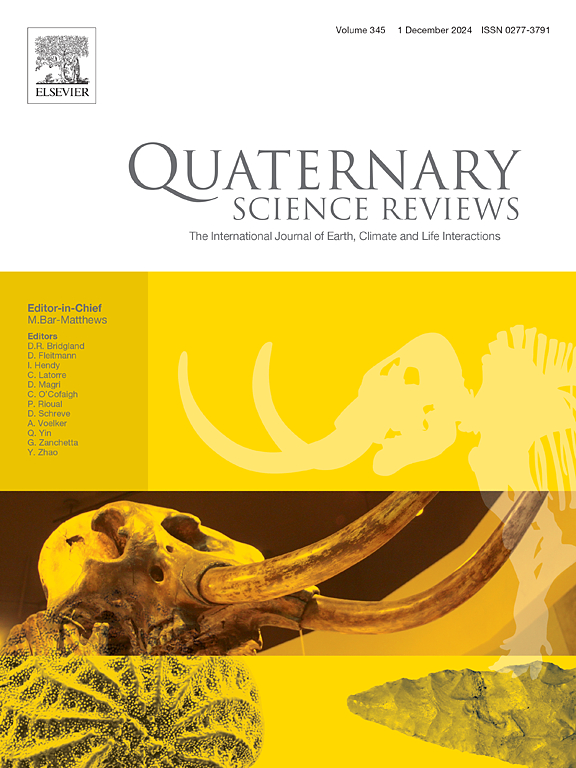Unravelling the formation processes and depositional histories of the Middle Palaeolithic Ararat-1 Cave, Armenia: A multiscalar and multiproxy geoarchaeological approach
IF 3.2
1区 地球科学
Q1 GEOGRAPHY, PHYSICAL
引用次数: 0
Abstract
The sedimentary sequence of Ararat-1 Cave encapsulates an intricate depositional archive (Marine Isotope Stage 3), crucial for our understanding of the Middle Palaeolithic in the Armenian Highlands and beyond. The study of this record is accomplished through the use of a multi-proxy geoarchaeological framework of analysis, incorporating stratigraphical, micromorphological, sedimentological, mineralogical, chemical, magnetic, micro-archaeological and geochronological methods. These analyses demonstrate the predominance of geogenic processes, including rockfalls, grain and debris flows, interbedded with aeolian sedimentation, as well as localised pyroclastic material in-wash events. Post-depositional alterations are primarily linked to intense bioturbation, as well as minimal karst-induced cementation and minor phosphate diagenesis. The study of the anthropogenic and biogenic records indicates dynamic human-animal habitation histories. Human visits, associated with combustion and consumption activities, were infrequent and short-lived, representing brief occupation episodes in a cave habitually visited by carnivores and herbivores. This high-resolution reconstruction of Ararat-1 Cave formation histories improves our understanding of regional settlement and mobility patterns, highlighting the presence of Middle Palaeolithic groups that temporarily camped in the Ararat Depression.
揭示旧石器时代中期亚美尼亚Ararat-1洞穴的形成过程和沉积历史:一个多尺度和多代理的地质考古方法
Ararat-1洞穴的沉积序列包含了一个复杂的沉积档案(海洋同位素阶段3),对我们了解亚美尼亚高地及以后的中旧石器时代至关重要。对这一记录的研究是通过使用多代理地质考古分析框架完成的,包括地层学、微形态学、沉积学、矿物学、化学、磁学、微考古学和地质年代学方法。这些分析证明了地质过程的优势,包括落石、颗粒和碎屑流,与风成沉积互层,以及局部的火山碎屑物质冲蚀事件。沉积后的蚀变主要与强烈的生物扰动、少量的岩溶胶结作用和少量的磷酸盐成岩作用有关。人类活动和生物活动记录的研究揭示了动态的人兽居住历史。与燃烧和消耗活动相关的人类访问不频繁且短暂,代表了食肉动物和食草动物习惯访问的洞穴的短暂占领事件。阿拉拉特-1洞穴形成历史的高分辨率重建提高了我们对区域定居和流动模式的理解,突出了在阿拉拉特洼地临时扎营的中旧石器时代群体的存在。
本文章由计算机程序翻译,如有差异,请以英文原文为准。
求助全文
约1分钟内获得全文
求助全文
来源期刊

Quaternary Science Reviews
地学-地球科学综合
CiteScore
7.50
自引率
15.00%
发文量
388
审稿时长
3 months
期刊介绍:
Quaternary Science Reviews caters for all aspects of Quaternary science, and includes, for example, geology, geomorphology, geography, archaeology, soil science, palaeobotany, palaeontology, palaeoclimatology and the full range of applicable dating methods. The dividing line between what constitutes the review paper and one which contains new original data is not easy to establish, so QSR also publishes papers with new data especially if these perform a review function. All the Quaternary sciences are changing rapidly and subject to re-evaluation as the pace of discovery quickens; thus the diverse but comprehensive role of Quaternary Science Reviews keeps readers abreast of the wider issues relating to new developments in the field.
 求助内容:
求助内容: 应助结果提醒方式:
应助结果提醒方式:


